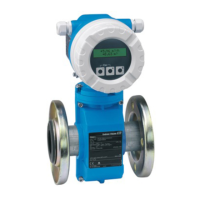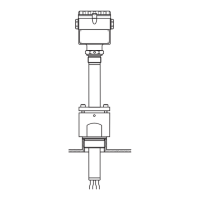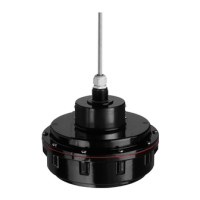Turbimax CUS51D Operation
Endress+Hauser 33
With a four- or five-point calibration, the calibration curve is plotted between the
calibration points. Avoid this type of calibration if possible, as it does not significantly
improve accuracy.
Explanation on the type of calibration
Single-point and two-point calibrations are based on the factory data record stored
internally in the device. In the case of a calibration at 3 points or more, the original factory
calibration curve is always rejected and a completely new calibration curve is calculated.
For multipoint calibrations, the calibration points should always cover the complete
measuring range of the application.
A calibration with zero water (0 g/l) will result in unusable calibrations for the following
applications:
• Activated sludge
• Excess sludge
• Digested sludge
• SiO2
• TiO2
Procedure for one-point calibration
With 1-point calibration, the sensor can remain immersed in the process medium.
1. For the laboratory measurement, take a sample of the medium in the direct vicinity
of the sensor.
2. Give the sample to the laboratory so that the turbidity or solids content can be
determined.
3. Select a data record on the CM44x transmitter.
4. If possible, start the calibration at the same time as the sampling procedure and enter
the laboratory value of the sample as the set point.
5. Enter an approximate value as the set point if no laboratory value is available during
calibration.
As soon as the laboratory value is available, amend the set point on the
transmitter.
Procedure for multipoint calibration
L
CAUTION
Acid or medium
Risk of injury, damage to clothing and the system!
‣
Switch off the cleaning unit before removing the sensor from the medium.
‣
Wear protective goggles and safety gloves.
‣
Clean away splashes on clothes and other objects.

